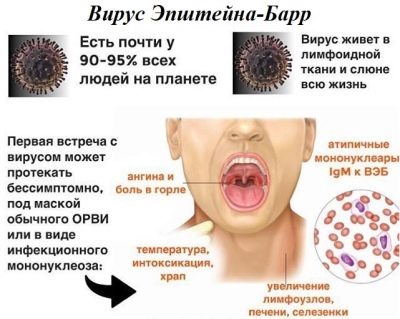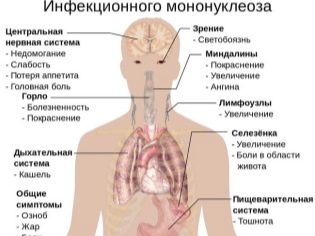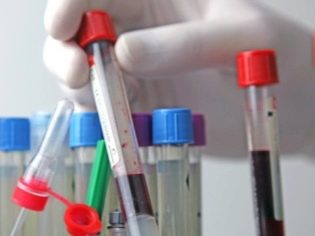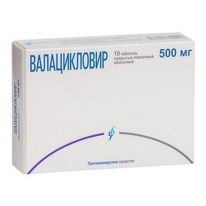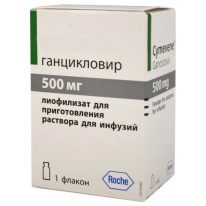Epstein-Barr virus in children: everything from symptoms to treatment
95% of people on the planet live and do not even suspect that they are carriers of the Epstein-Barr virus. This is one of the most common, but, alas, little-studied viruses, since they discovered it not so long ago, and they began to study in detail quite recently.
What it is?
The virus, named after the scientists Epstein and Barr, is directly related to the large family of herpes viruses. He is Type 4 herpes infection, and most often affects lymphocyte cells and some other cells of the human immune system. Also, the virus feels great in the structural cells of the mucous membranes of the upper respiratory tract, in the neurons of the central nervous system, it is able to inhabit and reproduce in the cells of any internal human organ.
After WHO calculated the exact number of infected (up to 95% of the total population), it became clear that Epstein-Barr virus the absolute majority of babies become infected even in infancybecause the newborn organism necessarily encounters one of the adult carriers (it can be both parents and a pediatrician from a polyclinic, and a nanny).
VEB viral infection (abbreviated name of the virus) can cause prolonged and frequent illness in a child.
Toddlers often begin to suffer from ARVI, diseases of bacterial origin, stomatitis, tonsillitis. Often it is possible to assume EBV in a child with chronic rhinitis or sinusitis.
Since the study of the virus is still ongoing, doctors are closely monitoring what new data scientists are receiving. And quite recently, a link was established between EBV and incurable chronic diseases: it is believed that This herpes virus creates a fertile ground for such illnesses as diabetes, autoimmune rheumatoid arthritis. Naturally, it is not the viral particle that causes serious illness, but its interaction with other viruses and some bacteria.
The Epstein-Barr virus itself is endowed with double-stranded DNA. There is a scientific hypothesis that the structure of the virus can create prerequisites for the development of various tumors in the human body, but so far these statements remain at the level of the hypothesis - clinical evidence is not enough.
The majority of those infected have no symptoms. A distinctive feature of this virus from others is the respect for the attacked cell of the body.
If all other viruses gradually cause the death of the human body cell they occupy, then EBV acts the opposite: it preserves and maintains the captured cell and in every possible way promotes its division.
The first virus was discovered by a virologist from the UK, Professor Michael Anthony Epstein. This happened quite by accident, when the doctor isolated a particle of the virus while examining other organisms. The date of discovery of the virus is considered to be 1964. A graduate student Yvonne Barr helped the professor in the study, and therefore the name of the virus contains two names. Herpes of the fourth type was called it only in 1979, and in 2016 the prefix “gamma” was added to the name - so VEB became a human gamma herpesvirus of the fourth type.
How does the infection occur?
According to international studies, the presence of the fourth herpes virus is determined in the blood of about 80% of babies under five years of age, and in 90-95% of cases in adults and older children. This means that the pathogen is highly contagious, that is, very contagious.
The source of infection is a sick person with an acute form of the disease, and it becomes infectious at the end of the incubation period. Contagious, it remains for six months after infection, and then becomes a carrier. But everything is not so simple here - according to medical statistics, up to 20% of all carriers are infectious.
It is believed that children under the age of 8-9 years are most susceptible to infection, children with HIV-positive status, children with other forms of immunodeficiency, and pregnant women, since their immunity is naturally reduced.
There are several ways of infection.
Contact - A healthy child is infected from an adult or other baby, usually through contact with mucous membranes, for example, through a kiss. Theoretically, you can become infected through household items, toys, linen, dishes, but this path is less common, because in the environment outside the human body, VEB is rapidly dying.
Airborne - the pathogen passes from the patient to a healthy person when talking, coughing, sneezing. At the same time, small particles of saliva with viral particles are emitted into the air. If they get on the mucous membranes of a healthy child, infection occurs.
Transmissible - this is transmission through blood. A healthy child can become infected during a blood transfusion procedure, during transplantation operations, the risks of infection through medical instruments are not excluded.
Maternal - Infection of the child occurs from the mother during pregnancy (in utero) or during hepatitis B with breast milk.
Through water, food and other external factors, the virus is transmitted very rarely. As already mentioned, the existence in the external environment is very difficult for him.
After the viral particle gets on the mucous membrane, it tries to immediately find the optimal environment for its habitat and most often attacks the throat, tonsils, glands that produce saliva. The virus multiplies rapidly, and very soon viral particles penetrate the blood through small capillaries and begin to develop large areas of the body.
Among all the cells of the immune system, whose task is to repel attacks from the outside for the sake of well-being inside, the Epstein-Barr virus prefers B-lymphocytes. But it does not destroy them, on the contrary, the number of such protective cells begins to grow rapidly. "Colleagues" of B-lymphocytes - T-lymphocytes, at a loss from this behavior of type B cells, begin to destroy some of the excess B-lymphocytes. This can be compared to the civil war, when a cell of one system destroys its own kind, but not such as they. Lymph nodes immediately react to this war - they increase.
If for some reason the child’s immunity is weak and the required number of T-lymphocytes is not present, a chronic herpetic infection of the fourth type develops. In this form, the damage of the whole organism is not excluded, the CNS, liver, and heart suffer most of all. With a healthy and normal immune status, the baby sometimes does not have any symptoms. Sometimes infectious mononucleosis develops. During the illness, the immune system forms antibodies to the virus, the immune memory to EBV persists for decades.
What illnesses can cause?
Descriptions of possible diseases due to Epstein-Barr virus infection can frighten even a person with steel nerves, but we hasten to reassure - in children with healthy immunity, nothing like this usually happens. Even infants who have protection in the form of innate (maternal) immunity are well protected from generalized herpes virus infection. therefore With a high degree of probability, the child will simply have a viral infection, and the parents may not even know that the case was in the fourth herpes virus.
Infectious mononucleosis
Quite often, EBV causes infectious mononucleosis, the so-called Filatov disease. Again, for a child with a healthy immunity, it does not pose a serious danger. The incubation period lasts from 5 days to 1.5 months. Symptomatology resembles any viral infection - the temperature rises, starts to sore in the throat, a cold can begin. On examination, enlarged tonsils are visible. The child actively sweats, complains of headache and muscle pain. After a few days, the symptoms become even brighter - a sore throat can begin.
Lymph nodes increase in size. You should not call it their inflammation. Nodes are enlarged, but not inflamed, if touched, they will be thick but painless.
In many children, the liver, spleen, whites of the eyes become yellowish slightly increase in size, the skin also begins to acquire a light waxy tinge, the urine becomes dark. A rash may appear on the body, but in most cases everything goes without it.
The disease lasts more than half a moon, the symptoms gradually subside, the liver, the spleen return to normal parameters, the throat ceases to hurt.
Chronic Fatigue Syndrome
This happens when viral particles of the neurons of the vegetative nervous system, as well as cells of the central nervous system, are damaged. Most often manifested insomnia - even a tired child can not fall asleep in a timely manner, superficial sleep, shallow, intermittent. The kid often complains about nightmares and fears at night, afraid of the dark.
When the nervous system is affected by the Epstein-Barr virus the child is often plagued with headaches with a feeling of pulsation in the temples. The kid is faster than his peers, his performance and attention are reduced, his ability to learn and master new material suffers. Emotional and psychological disorders, depression, aggression, irritability may occur.
Oncological diseases
Since EBV is more likely to infect lymphocytes, their uncontrolled division can lead to such malignant conditions as lymphogranulomatosis, lymphoma, Burkitt's lymphoma, malignant tumors in the nasopharynx, malignant growth of the tonsils lymphoid tissue. Also not excluded cancer of the esophagus, stomach.
Scientists have found that Epstein-Barr virus is present in 50% of the tissues affected by a malignant tumor in the study of biopsy material. Therefore, to say for sure whether there is a connection is not yet possible.
Experts in the field of diagnosis and treatment of cancer tumors claim that the virus does not cause cancer, as many people think. But it enhances the division of cancer cells, if the pathological process is still under the influence of some little-studied causes.
Autoimmune diseases
A special role is assigned to the virus in the formation of autoimmune incurable diseases. Directly, Epstein-Barr virus does not cause systemic lupus erythematosus or rheumatoid arthritis, but the presence of the virus makes adjustments to some of the immune responses when affected by other bacteria or viruses. For example, a child has EBV and he becomes infected with hemolytic streptococcus. At the same time, the cells of the immune system begin to regard themselves as alien and fight with themselves with all their might. This is manifested by an autoimmune disease.
Other diseases
Experts are prone to isolate several other diseases, the origin and development of which is supposedly the Epstein-Barr virus is most actively involved. Among them are variable immune deficiency, and frequent diseases of stomatitis, herpes simplex with painful rashes on the lips, chin, etc.
There are very unusual diseases associated with EBV, for example, Alice's Syndrome in Wonderland - With this disease, the child begins to perceive the values and proportions of everything around and his own body, either as smaller or as increased in relation to reality. The disorder develops in the brain due to the defeat of the membranes of viral particles or the tumors caused by them.
Diagnostics issues
Epstein-Barr virus is usually a finding, that is, it is detected quite by chance when examined for any other pathology. But if a child has the fourth herpes virus, the doctor may prescribe a serological blood test, and this is the only reliable diagnosis to date.
It should be understood that in the framework of laboratory serological research, it is not the virus in pediatric blood that is directly determined, but the reaction of children's immunity to the presence or absence of the virus.
Antibodies to the child’s blood appear during the acute phase of the disease caused by EBV. Such antibodies are called IgM and they are present not only in the diseased, but also in children within six months after the illness. After this period, other IgG antibodies begin to be produced, which gradually increase and are present in the blood of a patient who has had a fourth herpes virus infection throughout his life.
Also, the laboratory technician determines the time of the disease, establishing the exact class of antibodies, for example, IgG are early, that is, produced in the course of an acute ailment (designated as EA), and later - present after recovery (EBNA).
If the doctor says that the child received a positive result for antibodies to EBV, it should be clarified, what class of antibodies are detected, it will say either that the baby has a herpetic infection in the acute stage, or that such an infection was in the past (when an IgG is detected).
Decoding analysis
To understand what is indicated in the analysis form for antibodies to EBV, it should be understood that there will be exactly four characteristics indicated there, which were described above - IgM, IgG, EA, EBNA.
Igm | Igg | EA | EBNA | Result |
missing | missing | missing | missing | Immunity of the child has never met with EBV. In HIV-positive children, this result may be false-negative, PCR diagnosis is required. |
missing | present | missing | present | The child had had VEB, and it happened six months ago and more. The situation does not require treatment, the analysis shows a strong immunity in EBV. |
present | missing | missing | missing | The child has an acute stage of herpes infection, the symptoms are present for about a week. He needs treatment after prior consultation with a doctor. |
present | missing | present | missing | The child is in the midst of an acute period, 2-3 weeks have passed since the onset of symptoms of infection. He must be supervised by a doctor. |
present | present | present | missing | Such a result is a sign of exacerbation of chronic EBV. Medical help and consultation of the infectious disease specialist is required. |
present | present | present | present | Exacerbation of chronic herpes infection. |
Sometimes, as a result of the analysis, parents can see the numbers and percentages next to them. This means that they further investigated the viability of the antibodies - how much they can withstand new contact with the Epstein-Barr virus. Typically, such a characteristic is needed in order to understand why a baby has a long time enlarged lymph nodes or a fever.
The availability of antibodies is determined in percent. The higher the number before the “%” sign, the stronger the immune protection of the baby against a particular virus.
It is clear that 90% is always better than 15%. But if acute exacerbation of chronic herpes infection of the fourth type is suspected, and as a result of analyzing antibody avidity, 100% is written, the doctor will assume that the child has developed a different herpes infection of a different type, and Epstein-Barr virus has not .
Treatment
Without exception, all the viruses of the herpesvirus family, including the Epstein-Barr virus that we are considering, settle in the human body once and for all. If an infection has occurred, there can be no complete cure. In a dormant state, the virus will always be with a person. He will patiently wait in the wings when the immunity for some reason weakens, and then the disease will worsen.
Since it is impossible in principle to get rid of the virus, there is no single approach to treatment. Antiviral drugs, which are usually used for viral infections, have recently, in the framework of numerous international studies, for the most part have not shown any efficacy either for this virus or for others. There are no specific drugs that would be active against the Epstein-Barr virus in nature.
However, there is no great need for medical treatment for the disease, if, of course, the child does not have HIV infection or another severe pathology of immunity.
In severe cases, two types of antiviral agents that are active against herpes viruses are shown - in this case, children with immunodeficiency are given inpatient treatment with ganciclovir or valacyclovir.
In other cases, the fourth herpes infection occurs as SARS, and although it needs special control, it does not need specific treatment.
When the diagnosis of “infectious mononucleosis” is established, babies are hospitalized, children older than 3 years are allowed to treat at home. In the acute stage, the child is shown bed rest, plentifully warm drinking, at the recovery stage - a half-bed rest, physical exercise restrictions. The child should receive symptomatic treatment - at high temperatures, it is recommended to give him antipyretic agents, for quinsy - antibiotics prescribed by a doctor.
It is very important that the child eat food that does not annoy his throat - soft mashed potatoes, cereals, soups. Smoked, salted, fried and spicy dishes, carbonated drinks should be completely excluded.
In general, it is necessary to treat EBV as any SARS - rest, plentiful drink, gargling, nose. It is necessary to air the room more often, to do wet cleaning.
In severe cases, the doctor may prescribe antihistamines to reduce swelling in the nose and larynx, and in very severe cases, glucocorticosteroid hormones are used for first aid.
If the presence of a virus in a child’s body is manifested by chronic fatigue syndrome, the child’s regime should be reviewed, more time should be allocated for sleep, rest must be provided in the daily routine of the child, pauses when he can idle in the truest sense of the word. Vitamin preparations are prescribed for the child, parents are told about the rules of proper balanced nutrition, and it is strongly recommended to show the child to the psychologist - As soon as positive emotions and motivation appear in children with chronic fatigue, the symptoms usually subside.
It is much more difficult to cure the diseases associated in EBV. Autoimmune diseases today are considered incurable, but there are many ways to alleviate the symptoms and signs, to eliminate the serious consequences, disability, if the child will receive supportive therapy. In case of oncological diseases, regardless of whether there is a EBV virus in the body or not, the oncologist performs the treatment with all the available and necessary means in the specific situation.Alice syndrome in Wonderland is treated by a psychiatrist and the drugs used for this are not at all antiviral.
Most of the children without the health consequences of the Epstein-Barr virus and do not even realize it. There is no vaccine for this virus, but recently it is reported that it is being developed, and the first prototypes are now undergoing laboratory tests. The next step will be clinical trials, and it is possible that humanity will soon find a way to defeat this virus.
Reviews
For most mothers, the news of a positive blood test for antibodies to EBV turns out to be shocking. Whether the frightening name of the virus, or in the absence of awareness, but many parents perceive this news as a tragedy, as evidenced by the numerous reviews left by them on thematic forums.
Many mothers who treated the child on the advice of a doctor with antiviral drugs, and those who refused treatment, indicate that the child’s condition returned to normal at almost the same time.
Experienced moms advise that it is necessary to vaccinate a child after a herpes virus infection, not to miss the recommended vaccination by age, since immunity after EBV decreases markedly.
It is also worth taking all measures to improve the immune protection of the baby - to walk more often and longer in the open air, play sports, play outdoor games, temper the child and give him more vitamins.


